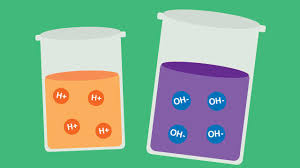MAKING A NATURAL pH INDICATOR?
A. Materials needed:
- Red cabbage or sunflower petals
- A source of heat
- Test tube or a pot
B. Instructions:
1. Chop the cabbage (sunflower petals) roughly.
2. Boil the substance over medium heat..
3. Sieve the substance to obtain a liquid extract of the cabbage or sunflower.
4. Put the liquid into different test tubes (or you can use beakers made from cut plastic bottles).
5. Drop different substances into the test tubes and observe the colour changes!
SO WHAT CAUSES THE COLOUR CHANGE?
Pigments in red cabbage, sunflowers and some fruits and vegetables contain pH-sensitive elements that enable them change colour depending on wheteher the substance of interest is an acid, a base (alkaline), or neutral. The pH scale is used to numerically assign the acidity or alkalinity of a substance; an acid has a pH less tahn 7, an alkaline greater than seven and neutral substances (such as water) have pH of exactly 7.
TAKING IT FURTHER
Confirm the acidity or alkalinity of three substances in your house. What colour changes have you noticed? What other neutral substances, apart from water, can you confirm with your natural indicator?

 >
>